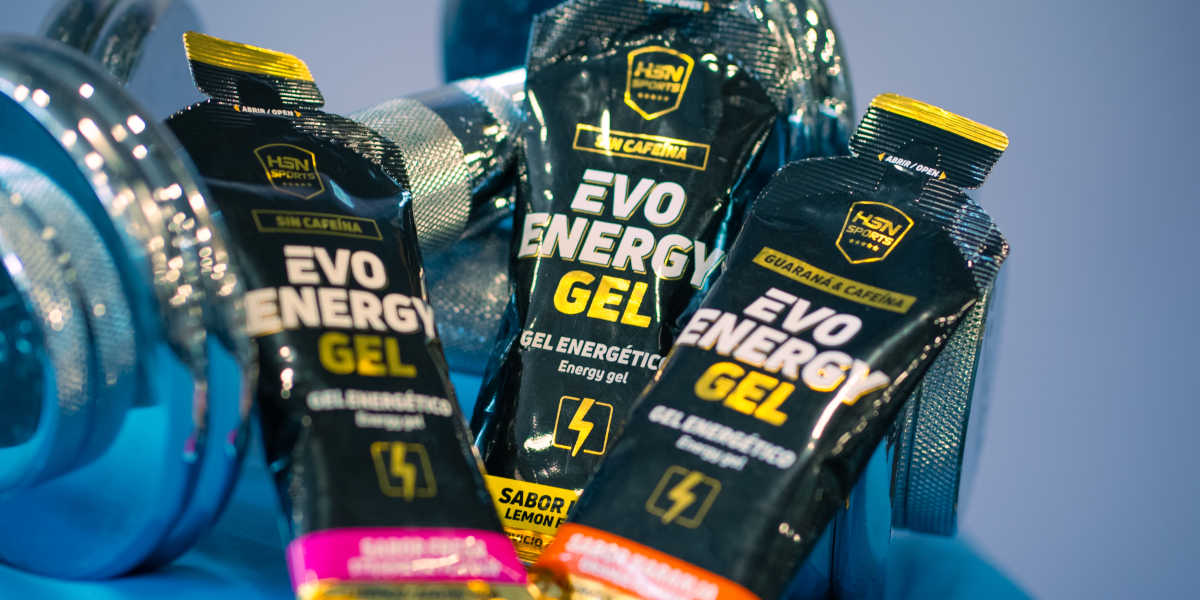

Featured
What Is A Metabolic Workout
Modified: January 22, 2024
Discover the benefits and principles of a featured metabolic workout, an effective fitness routine that boosts your metabolism and burns calories efficiently. Learn how to optimize your workouts for maximum results and faster weight loss.
Introduction
Welcome to the world of metabolic workouts, a popular and effective way to boost your fitness level and achieve your health goals. In today’s fast-paced world, finding time for long gym sessions can be a challenge. However, by incorporating metabolic workouts into your routine, you can maximize your training results in a shorter amount of time.
Metabolic workouts, also known as metabolic conditioning or metcons, are high-intensity workouts that combine cardiovascular exercises, strength training, and challenging movements to target multiple muscle groups simultaneously. These workouts are designed to increase your metabolism, burn calories, and improve overall cardiovascular fitness.
Unlike traditional, steady-state cardio workouts, metabolic workouts focus on intensifying your training and keeping your heart rate elevated throughout the entire session. This leads to a phenomenon called excess post-exercise oxygen consumption (EPOC), where your body continues to burn calories at an elevated rate for hours after your workout session.
Whether you’re a fitness enthusiast looking to take your training to the next level or someone who wants to optimize their time in the gym, metabolic workouts can be a game-changer. By challenging your body in various ways, you’ll not only burn fat but also improve endurance, strength, and overall athletic performance.
In this article, we will delve into the world of metabolic workouts, exploring the benefits, principles, key components, and even provide you with a sample routine. Additionally, we’ll share some valuable tips and common mistakes to avoid, ensuring you get the most out of your metabolic workouts.
So, if you’re ready to kick your fitness goals into high gear, let’s dive into the world of metabolic workouts and discover a new, efficient way to transform your body and enhance your health.
Definition of Metabolic Workout
A metabolic workout, also known as metabolic conditioning or metcon, is a form of high-intensity training that combines cardiovascular exercises, resistance training, and dynamic movements to maximize calorie burn and improve overall fitness. The primary goal of a metabolic workout is to elevate your heart rate, increase energy expenditure, and boost metabolic rate long after the workout has ended.
Metabolic workouts are designed to challenge both the aerobic and anaerobic energy systems. The aerobic system utilizes oxygen to produce energy, while the anaerobic system relies on stored energy sources in the muscles. By incorporating both types of exercises, metabolic workouts provide a comprehensive training approach that targets different muscle groups and energy systems simultaneously.
These workouts typically involve performing a series of compound exercises that engage multiple muscle groups, such as squats, lunges, burpees, push-ups, and kettlebell swings. The exercises are performed in rapid succession with minimal rest intervals, intensifying the cardiovascular demand and metabolic response.
The intensity of a metabolic workout is typically measured using metrics such as heart rate, rate of perceived exertion (RPE), or time-based intervals. The goal is to push yourself to your limits and challenge your body to adapt and improve. These workouts are highly customizable and can be modified to suit individual fitness levels and goals.
Unlike steady-state cardio exercises, such as jogging or cycling at a moderate pace, metabolic workouts are characterized by their dynamic and varied nature. They can include elements of high-intensity interval training (HIIT), circuit training, Tabata training, and functional fitness exercises. The constant variation in movements and intensity keeps the body guessing and prevents plateauing, making metabolic workouts exciting and never boring.
Engaging in metabolic workouts offers numerous benefits beyond just calorie burn. These workouts help improve cardiovascular endurance, increase muscular strength and endurance, enhance athletic performance, and promote overall body composition changes. Additionally, metabolic workouts have been shown to improve insulin sensitivity, enhance fat oxidation, and boost metabolic rate even during periods of rest.
Now that we’ve defined metabolic workouts and explored their benefits, let’s delve deeper into the principles that guide these effective training techniques.
Benefits of Metabolic Workouts
Metabolic workouts offer a wide range of benefits that go beyond just burning calories. Incorporating these high-intensity training sessions into your fitness routine can yield significant improvements in your overall health and fitness. Here are some of the key benefits of metabolic workouts.
1. Efficient Calorie Burn: One of the primary benefits of metabolic workouts is their ability to torch calories in a shorter amount of time. The combination of cardiovascular exercises and resistance training in these workouts elevates your heart rate and engages more muscle groups, resulting in a higher calorie burn during and even after the workout has ended. This makes metabolic workouts an excellent choice for individuals looking to lose weight or maintain a healthy body composition.
2. Improved Cardiovascular Fitness: Metabolic workouts are designed to challenge your cardiovascular system by pushing you to work at higher intensities for extended periods. This type of training helps improve your heart’s efficiency, increases lung capacity, and enhances overall cardiovascular endurance. Regular participation in metabolic workouts can lead to improved athletic performance, increased stamina, and enhanced energy levels in daily activities.
3. Enhanced Muscle Strength and Tone: The combination of resistance exercises, such as squats, lunges, and push-ups, in metabolic workouts helps increase muscle strength and promote muscle hypertrophy. These exercises engage multiple muscle groups simultaneously, leading to functional strength gains and improved muscle tone. By incorporating different movement patterns and challenging the muscles in various ways, metabolic workouts promote balanced muscle development.
4. Boosted Metabolic Rate: Metabolic workouts stimulate the body’s metabolic rate, leading to increased calorie burn even after the workout is finished. Excess post-exercise oxygen consumption (EPOC), also known as the afterburn effect, occurs as your body works to replenish oxygen stores, restore hormone balance, and repair muscle tissue. This means that your metabolism remains revved up for hours after the workout, promoting continued calorie burn and fat loss.
5. Time Efficiency: In our busy lives, finding time for long workout sessions can be challenging. Metabolic workouts offer a time-efficient solution by providing a high-intensity, full-body workout in a shorter amount of time. With metabolic workouts, you can achieve maximum results in as little as 20 to 30 minutes, making them ideal for individuals with limited time but still wanting to make meaningful progress towards their fitness goals.
6. Variety and Fun: Metabolic workouts are known for their dynamic and varied nature. With a wide range of exercises and training methods available, such as HIIT, circuit training, and functional movements, these workouts keep you engaged and prevent boredom. The constant variation challenges your body in different ways, ensuring ongoing progress and preventing plateaus.
7. Overall Health Benefits: Engaging in metabolic workouts not only improves physical fitness but also offers numerous health benefits. Regular participation in these workouts has been shown to improve insulin sensitivity, reduce the risk of chronic diseases like heart disease and diabetes, lower blood pressure, and improve lipid profiles. Metabolic workouts promote not only a stronger physique but also a healthier overall body.
With these remarkable benefits, it’s no wonder metabolic workouts have gained popularity among fitness enthusiasts and professionals alike. Next, we’ll explore the principles that make metabolic workouts so effective.
Principles of Metabolic Workouts
Metabolic workouts are guided by certain principles that make them effective in maximizing results and improving overall fitness. Understanding these principles will help you optimize your training and get the most out of your metabolic workouts. Here are the key principles:
1. High Intensity: The cornerstone of metabolic workouts is high-intensity training. This means pushing yourself to work at a level that challenges your cardiovascular system and muscles. By performing exercises at a high intensity, you increase energy expenditure and stimulate muscle growth, leading to improved fitness and greater calorie burn.
2. Compound Movements: Metabolic workouts focus on compound movements that engage multiple muscle groups simultaneously. Exercises like squats, deadlifts, lunges, push-ups, and pull-ups are commonly included. Compound movements not only challenge the muscles in a more functional way but also require more energy expenditure, leading to a higher metabolic response.
3. Short Rest Intervals: Rest periods between exercises in metabolic workouts are usually kept short. This helps keep your heart rate elevated, promoting cardiovascular endurance and increasing calorie burn. Short rest intervals also contribute to the metabolic conditioning aspect of these workouts, challenging your body to adapt and become more efficient.
4. Variation and Progression: Metabolic workouts incorporate variation in exercises, training methods, and intensity levels. This prevents the body from adapting to a specific routine, leading to continued progress and avoiding plateaus. As you become more fit, it’s important to progressively increase the intensity or difficulty of exercises to keep challenging your body.
5. Incorporation of Cardio and Resistance Training: Metabolic workouts combine cardiovascular exercises and resistance training to create a comprehensive training approach. This combination helps to improve both aerobic and anaerobic fitness, leading to enhanced cardiovascular endurance, increased muscle strength, and improved overall body composition.
6. Periodization: Periodization is an essential principle in metabolic workouts. It involves cycling through different training phases and adjusting the volume, intensity, and exercise selection accordingly. This allows for proper recovery, reduces the risk of overtraining, and promotes long-term progress and optimal performance.
7. Individualization: Metabolic workouts should be tailored to individual fitness levels, goals, and abilities. It’s important to listen to your body, modify exercises as needed, and progress at a pace that is suitable for you. Individualization ensures safety and allows for steady and sustainable progress over time.
By following these principles, you can create effective and well-rounded metabolic workouts that target various muscle groups, challenge your cardiovascular system, and help you achieve your fitness goals. Next, we will explore the key components of a successful metabolic workout.
Key Components of a Metabolic Workout
A successful metabolic workout consists of several key components that work together to maximize your workout’s effectiveness and help you achieve your fitness goals. By understanding and implementing these components, you can create a well-rounded and challenging metabolic workout. Here are the key components:
1. Dynamic Warm-Up: Every metabolic workout should begin with a dynamic warm-up to prepare your body for the upcoming movements. A dynamic warm-up involves dynamic stretching, mobility exercises, and light cardiovascular activities. It increases blood flow to the muscles, improves flexibility, and activates the muscles you’ll be working during the workout.
2. Circuit Format: Metabolic workouts often follow a circuit format, where you move from one exercise to the next with minimal rest in between. This format keeps your heart rate elevated, maximizes calorie burn, and provides a comprehensive full-body workout. You can structure the circuit with a predetermined number of exercises or time-based intervals.
3. Combination of Cardiovascular and Strength Exercises: Metabolic workouts integrate both cardiovascular and strength exercises to target multiple energy systems and muscle groups. Cardiovascular exercises, such as jumping jacks, mountain climbers, or rowing, elevate your heart rate, while resistance exercises like squats, lunges, or kettlebell swings challenge your muscles. This combination ensures a well-rounded workout and promotes both aerobic and anaerobic fitness.
4. High Intensity and Interval Training: The intensity of a metabolic workout is a critical component. High-intensity interval training (HIIT) is often incorporated to maximize calorie burn and improve cardiovascular fitness. HIIT involves alternating between short bursts of high-intensity exercise and brief recovery periods. This style of training keeps your body working at high intensity, elevates your heart rate, and triggers the afterburn effect for increased fat burn and metabolic rate.
5. Proper Technique and Form: It’s crucial to prioritize proper technique and form during metabolic workouts to prevent injury and ensure optimal muscle activation. Focus on maintaining good posture, engaging the correct muscles, and executing each movement with control and precision. If you’re new to metabolic workouts or unfamiliar with certain exercises, consider working with a qualified fitness professional to ensure proper technique.
6. Progressive Overload: To continue making progress and challenging your body, it’s important to apply the principle of progressive overload in your metabolic workouts. This involves gradually increasing the intensity, duration, or difficulty of exercises over time. Progressively pushing your limits will lead to strength gains, improved endurance, and continued improvements in overall fitness.
7. Cool-Down and Stretching: A proper cool-down session should be included at the end of your metabolic workout. This allows your heart rate to gradually return to normal and helps prevent muscle soreness. Incorporate some static stretching exercises to improve flexibility and promote muscle recovery.
By incorporating these key components into your metabolic workouts, you can create challenging and effective training sessions that target multiple aspects of fitness. Remember to listen to your body, make modifications when needed, and always prioritize proper form and technique. Next, we will provide a sample metabolic workout routine to give you a practical understanding of these components in action.
Sample Metabolic Workout Routine
Here’s a sample metabolic workout routine to give you an idea of how you can structure your own workouts. Remember to adjust the intensity, duration, and exercises based on your fitness level and goals. This routine incorporates a combination of cardiovascular exercises and strength training to maximize calorie burn and challenge your muscles.
Circuit 1:
- Jumping Jacks: 30 seconds
- Bodyweight Squats: 12 reps
- Push-Ups: 10 reps
- Plank: Hold for 30 seconds
- Rest: 30 seconds
Circuit 2:
- Mountain Climbers: 30 seconds
- Lunges: 12 reps on each leg
- Dumbbell Shoulder Press: 10 reps
- Russian Twists: 12 reps on each side
- Rest: 30 seconds
Circuit 3:
- Box Jumps: 10 reps
- Deadlifts: 12 reps
- Bent-Over Rows: 10 reps
- Plank Jacks: 12 reps
- Rest: 30 seconds
Circuit 4:
- Burpees: 10 reps
- Kettlebell Swings: 12 reps
- Tricep Dips: 10 reps
- Side Plank Hip Dips: 10 reps on each side
- Rest: 30 seconds
Perform each exercise in the circuit consecutively with minimal rest in between. Once you complete one circuit, take a 30-second rest before moving on to the next circuit. Repeat the entire circuit sequence 2-3 times, depending on your fitness level. Remember to focus on maintaining proper form and using weights or resistance that challenge you but allow you to complete the designated number of reps with good technique.
This sample metabolic workout routine incorporates a combination of cardiovascular exercises like jumping jacks and mountain climbers, along with strength exercises like squats, push-ups, dumbbell shoulder presses, and kettlebell swings. These exercises target multiple muscle groups and elevate your heart rate, leading to improved cardiovascular fitness and increased calorie burn.
Feel free to modify this sample routine to fit your preferences and fitness level. You can adjust the number of circuits, add or remove exercises, or increase or decrease the intensity and rest periods as needed. Remember to listen to your body and make modifications as necessary to ensure a safe and effective workout.
Now that you have a sample metabolic workout routine, let’s move on to some tips for making your metabolic workouts more effective and enjoyable.
Tips for Effective Metabolic Workouts
To make the most out of your metabolic workouts and achieve optimal results, consider these tips:
1. Prioritize Proper Nutrition: Fueling your body with the right nutrients before and after your metabolic workouts is essential for performance and recovery. Aim to consume a balanced meal consisting of carbohydrates, protein, and healthy fats about 1-2 hours before your workout. Afterward, refuel with a post-workout snack or meal rich in protein and carbohydrates to support muscle repair and replenish energy stores.
2. Stay Hydrated: Proper hydration is crucial during metabolic workouts, as you’ll be sweating and losing fluids. Drink water before, during, and after your workouts to stay hydrated and maintain optimal performance. If your workout is particularly intense or lasts longer than 60 minutes, consider replenishing electrolytes through a sports drink or electrolyte supplement.
3. Warm Up and Cool Down: Always begin your metabolic workouts with a dynamic warm-up to increase blood flow, warm up your muscles, and reduce the risk of injuries. Spend 5-10 minutes performing dynamic stretches, mobility exercises, and light cardio activities. Similarly, cool down with static stretches and gentle movements to gradually lower your heart rate and promote muscle recovery.
4. Track Your Progress: Keep a record of your workouts to track your progress over time. This can help you identify improvements, see trends, and make necessary adjustments to your workouts. You can use a fitness app, a workout journal, or even a simple spreadsheet to track your exercises, sets, reps, and weights used.
5. Incorporate Rest and Recovery: Rest and recovery are vital components of any training program. Allow your body adequate time to recover by scheduling rest days in between metabolic workouts. This gives your muscles and central nervous system time to repair and grow stronger. Additionally, ensure you’re getting enough sleep to support the recovery process and optimize performance.
6. Listen to Your Body: Pay attention to how your body feels during your metabolic workouts. If something doesn’t feel right or causes pain, adjust or modify the exercise. It’s important to prioritize safety and avoid pushing yourself beyond your limits. Gradually progress the intensity and difficulty of exercises as you become stronger and more confident.
7. Mix Up Your Exercises: Keep your metabolic workouts exciting and challenging by varying the exercises you incorporate. Try new movements, switch up the order of exercises, or use different equipment to keep your body and mind engaged. This variety not only prevents boredom but also ensures that you continue to challenge different muscle groups.
8. Set Realistic Goals: Determine specific, measurable, attainable, relevant, and time-bound (SMART) goals for your metabolic workouts. Whether you’re aiming to increase the number of reps, decrease rest periods, or improve overall endurance, setting realistic goals will keep you motivated and focused on your progress.
9. Seek Professional Guidance: If you’re new to metabolic workouts or want to ensure proper form and technique, consider working with a qualified fitness professional. They can provide guidance, create personalized workout plans, and help you progress safely and effectively.
10. Enjoy the Process: Above all, enjoy the process of challenging your body and improving your fitness. Celebrate your achievements along the way and embrace the journey towards a healthier and fitter you. Remember that consistency and dedication are key to long-term success.
By following these tips, you can optimize the effectiveness of your metabolic workouts and make the most out of your training sessions.
Next, let’s explore some common mistakes to avoid when it comes to metabolic workouts.
Common Mistakes to Avoid
While metabolic workouts can be highly effective in achieving your fitness goals, it’s important to be aware of common mistakes that can hinder your progress. By avoiding these mistakes, you can ensure that you’re getting the most out of your workouts and minimizing the risk of injury. Here are some common mistakes to avoid:
1. Neglecting Proper Form: One of the most common mistakes is sacrificing proper form for speed or intensity. It’s essential to prioritize good technique and maintain proper alignment during each exercise. Poor form not only reduces the effectiveness of the exercise but also increases the risk of injury. Take the time to learn and understand the correct form for each movement, and if needed, seek guidance from a fitness professional.
2. Skipping the Warm-Up and Cool-Down: Neglecting a proper warm-up and cool-down is a mistake that can lead to injuries and hinder recovery. A dynamic warm-up prepares your muscles and joints for the upcoming workout, while a cool-down helps to gradually lower your heart rate and aid in muscle recovery. Make sure to allocate time for these important components of your workout.
3. Overdoing It: Pushing yourself to the limit is important in metabolic workouts, but overdoing it can lead to burnout, injuries, and hinder progress. Gradually increase the intensity and progression of exercises. Listen to your body and take rest days when needed. Balance is key to sustainable progress and long-term success.
4. Not Allowing Sufficient Recovery: Recovery plays a critical role in optimizing the benefits of metabolic workouts. Not allowing enough recovery time between workouts can lead to overtraining, decreased performance, and an increased risk of injury. Aim to include rest days in your training schedule and prioritize proper sleep and nutrition to promote adequate recovery.
5. Ignoring Individual Fitness Level: It’s important to recognize and respect your individual fitness level when performing metabolic workouts. Attempting exercises that are beyond your capabilities may lead to injury or discourage progress. Start with exercises that challenge you appropriately and gradually progress as you become stronger and more comfortable.
6. Neglecting Variety and Progression: Variation and progression are key components of metabolic workouts. Failing to introduce new exercises or increase the intensity over time can lead to plateaus and decreased motivation. Keep your workouts engaging by incorporating different movements, equipment, and training methods. Gradually increase the difficulty level to continue challenging your body.
7. Not Listening to Your Body: Your body is your best guide during your workouts. Ignoring signs of pain, exhaustion, or discomfort can lead to injuries. Pay attention to how your body feels and make necessary modifications or adjustments when needed. It’s essential to prioritize safety and avoid pushing yourself beyond your limits.
8. Focusing Solely on Calories Burned: While metabolic workouts are effective for calorie burn, it’s important not to fixate solely on this aspect. Instead, focus on overall progress, including strength gains, improved endurance, and increased performance. Trust the process and remember that long-term results come from a combination of proper nutrition, consistency, and varied training.
9. Neglecting Recovery Strategies: Recovery strategies such as foam rolling, stretching, and mobility exercises are often overlooked. These practices can help reduce muscle soreness, improve flexibility, and prevent injury. Make time for active recovery techniques to aid in the recovery process and enhance your overall performance.
10. Comparing Yourself to Others: Each person’s fitness journey is unique. Comparing your progress to others can lead to frustration and unrealistic expectations. Focus on your own progress, set achievable goals, and celebrate your own accomplishments along the way.
Avoiding these common mistakes will help you maximize the benefits of metabolic workouts while minimizing the risk of setbacks. By staying mindful of proper form, prioritizing recovery, and listening to your body, you can ensure a safe, effective, and rewarding fitness journey.
Now that we’ve covered the common mistakes to avoid, it’s time to wrap up this comprehensive guide to metabolic workouts.
Conclusion
In conclusion, metabolic workouts offer a powerful and efficient approach to achieving your fitness goals. These high-intensity training sessions combine cardiovascular exercises, strength training, and dynamic movements to elevate your heart rate, increase calorie burn, and improve overall fitness.
By incorporating metabolic workouts into your fitness routine, you can experience a range of benefits. These include efficient calorie burn, improved cardiovascular fitness, enhanced muscle strength and tone, boosted metabolic rate, time efficiency, variety and fun, and overall health improvements.
To make your metabolic workouts effective, it’s important to follow key principles such as high intensity, compound movements, short rest intervals, variation, and individualization. Additionally, incorporating proper nutrition, staying hydrated, warming up and cooling down, tracking progress, and avoiding common mistakes will further enhance the effectiveness and safety of your workouts.
Remember, metabolic workouts can be tailored to your fitness level and preferences. Whether you’re a beginner or an experienced athlete, you can modify the exercises, intensity, and duration to suit your needs. Progress at your own pace, but also challenge yourself to continue pushing the boundaries of what you thought was possible.
So, if you’re looking for a time-efficient and effective way to improve your fitness, consider incorporating metabolic workouts into your routine. With dedication, consistency, and the guidance of qualified fitness professionals, you can transform your body, boost your health, and reach your fitness goals.
Now, it’s time to embark on your metabolic workout journey and experience the incredible benefits that await you. Get ready to push your limits, sweat, and embrace the power of metabolic workouts.









